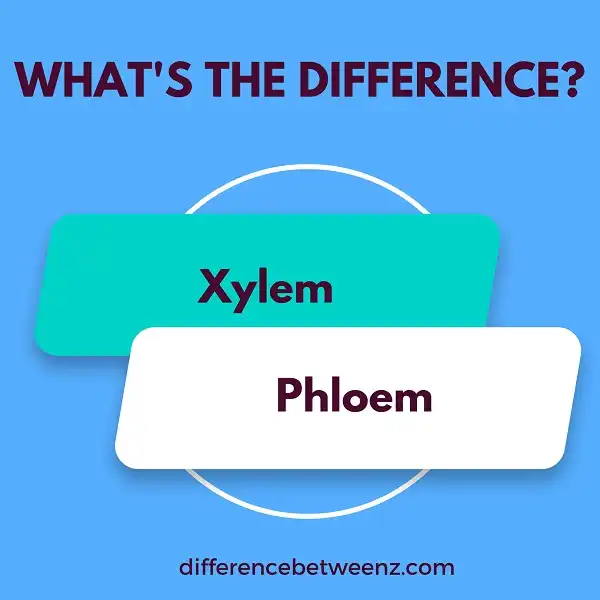Xylem and phloem are two types of vascular tissue in plants. Xylem is responsible for the transportation of water and minerals from the roots to the rest of the plant, while phloem transports sugars and other nutrients. Although both tissues are necessary for a plant’s survival, they perform different functions. Let’s take a closer look at xylem and phloem, and learn about their unique characteristics.
What is Xylem?
Xylem is a type of plant tissue that helps to transport water and minerals from the roots to the leaves. It is made up of cells that are arranged in a long, hollow tube. Xylem cells are thicker at the bottom than at the top, which helps to keep the water column under pressure.
- Xylem tissue is found in the stems and leaves of plants. In addition to transporting water, xylem tissue also provides structural support for plants. Xylem tissue is made up of two types of cells: tracheids and vessel elements.
- Tracheids are long, thin cells that are joined end-to-end. They have pores on their walls that allow water to flow from one cell to the next. Vessel elements are shorter and wider than tracheids.
- They are also joined end-to-end, but they have holes in their walls that allow water to flow freely through them. Xylem tissue is essential for the proper functioning of plants. Without it, plants would be unable to transport water and minerals from the roots to the leaves, and they would soon die.
What is Phloem?
A phloem is a type of tissue that helps to transport food and other nutrients throughout a plant. The cells of the phloem are arranged in long, slender tubes that run the length of the plant. Phloem tissue is composed of four main types of cells: sieve-tube members, companion cells, Phloem parenchyma, and Phloem fibers. Sieve-tube members are the primary cells responsible for transporting nutrients, while companion cells help to regulate the flow of sap. Phloem parenchyma and Phloem fibers provide support and structure for the phloem tissue. Phloem plays an essential role in plant growth and development, and it is essential for the transportation of food from leaves to other parts of the plant.
Difference between Xylem and Phloem
Xylem and phloem are two types of tissues that are essential for the transportation of water and nutrients in plants. Xylem tissue is made up of hollow tubes that run from the roots to the leaves, carrying water and minerals upward. Phloem tissue is made up of living cells that transport sugars and other organic molecules downward.
Xylem and phloem tissues are arranged in a series of overlapping layers, called vascular bundles. The xylem tissue is located in the center of the bundle, surrounded by phloem tissue. Together, these tissues form the plant’s vascular system, which is responsible for transporting water, nutrients, and other essential molecules throughout the plant.
Conclusion
Xylem and phloem are two types of vascular tissue in plants. The xylem is responsible for the transport of water and minerals from the roots to the rest of the plant, while the phloem transports food and other organic molecules throughout the plant. Understanding these differences can help you better care for your plants.


